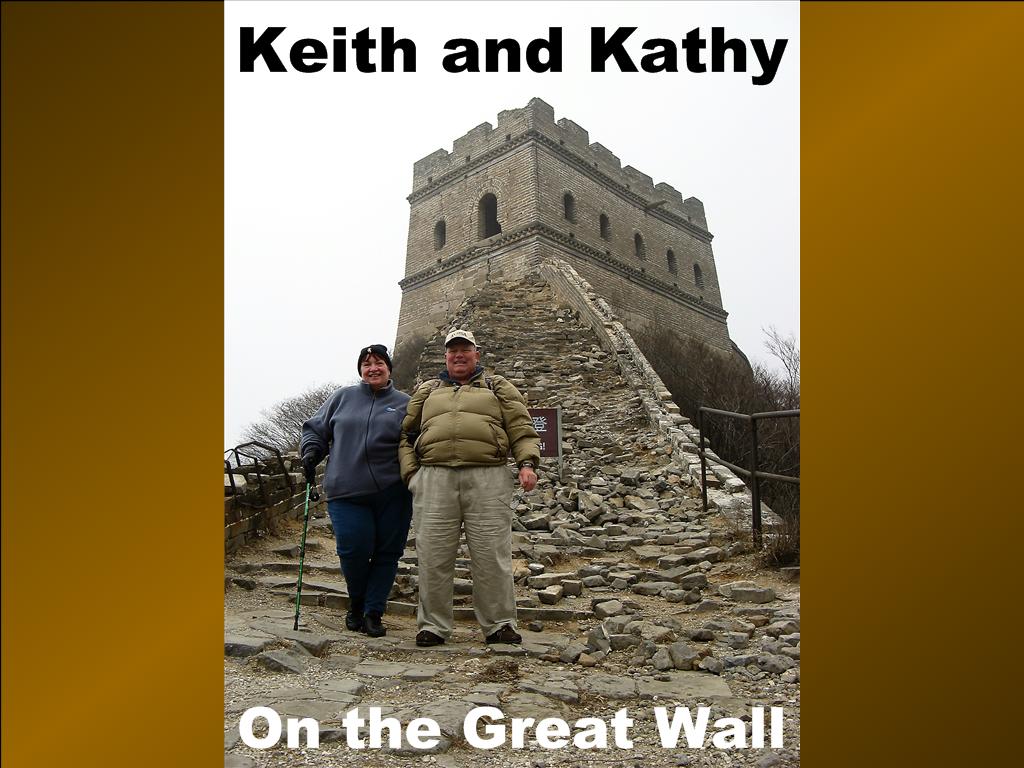
Monday November 26
Lacquer Factory and Terra Cotta Warriors
The hotel we are staying at is lovely. It is decorated in Tang Dynasty decor. Each section of rooms has an animal theme. We are in the duck section. Our room overlooks the hotel garden where two beautiful peacocks wander freely.

Xian Hotel Lobby

At 8:15am we met George in the lobby and headed for a lacquer factory, located about 15 minutes from the hotel. We were met by a factory guide who spoke impeccable English. She explained the history and manufacturing of lacquer. We learned that there is a lacquer tree, whose sap is tapped in a manner similar to maple syrup sap. It is the lacquer sap that is used in lacquer making. In the workshop there were artists using jade and mother of pearl to create designs in the lacquer. Our last stop was the showroom; no bargains here!

Hand worked Lacquer Artist
Our second destination was the Terra Cotta Warriors, which are located about 1 hour outside of Xian. Dating from 210 BCE, the Terra Cotta Army is a collection of over 7,000 full-sized clay figures of human and animal warriors. Their creation was commissioned by the first Chinese Emperor, Shi Huang Di, to serve him in the afterlife. Less than 5 years after the Emperor’s death, the collection was ransacked by a peasant rebellion. The clay warriors were re-discovered in 1974 by 3 farmers who were attempting to dig a well. The government has erected 4 huge museums over the 4 excavation sites. It is considered by the Chinese to be the eighth wonder of the World. All of the figures were severely damaged in the ancient ransacking. None of the figures have been excavated intact. For archaeologists, reassembling each figure is like putting together a huge jigsaw puzzle. Also found at the site were a bronze chariot and limousine used by the emperor.

Museum Built to House and Protect Terra Cotta Warriors In-Situ
 A Phalanx of Restored Terra Cotta Warriors
A Phalanx of Restored Terra Cotta Warriors

We spent 3 hours at the Terra Cotta Army museums. We were amazed the massive scale of the dig. We also viewed a short video telling a brief history of the Qin and the site. There is, of course, a gift shop, where one of the three discovering farmers will chop (sign) your souvenir book, for a suitable gratuity
Shi Huang Di's actual tomb is located about 1-1/2 miles from the warrior’s site. Excavation work has not started on his tomb because the entrance has not been found, and there are thought to be many booby traps set in the tomb.
The area outside of Xian is a farming community where pomegranates and white potatoes with natural sugars are grown. As we headed for lunch, we passed many people selling these vegetables.
Lunch was good. We were introduced to a couple of new dishes; wheat noodles and beef noodle soup. At lunch we were entertained by a noodle maker who created perfectly shaped noodles by hand.

After lunch we stopped at a Chinese herbal medicine market. Keith bought a couple of Tiger Balm patches for his feet. Perhaps they will help. And perhaps not.
We have returned to the hotel and have opted out of evening activities, which include a visit to the Bell Tower, which is the Muslim section of Xian, and a Mongolian Hot pot dinner followed by a water show. We are simply too tired.
Tomorrow we leave for a home-hosted overnight visit in a Chinese village, followed by a 4 day cruise on the Yangtze River, through the Three Gorges

No comments:
Post a Comment